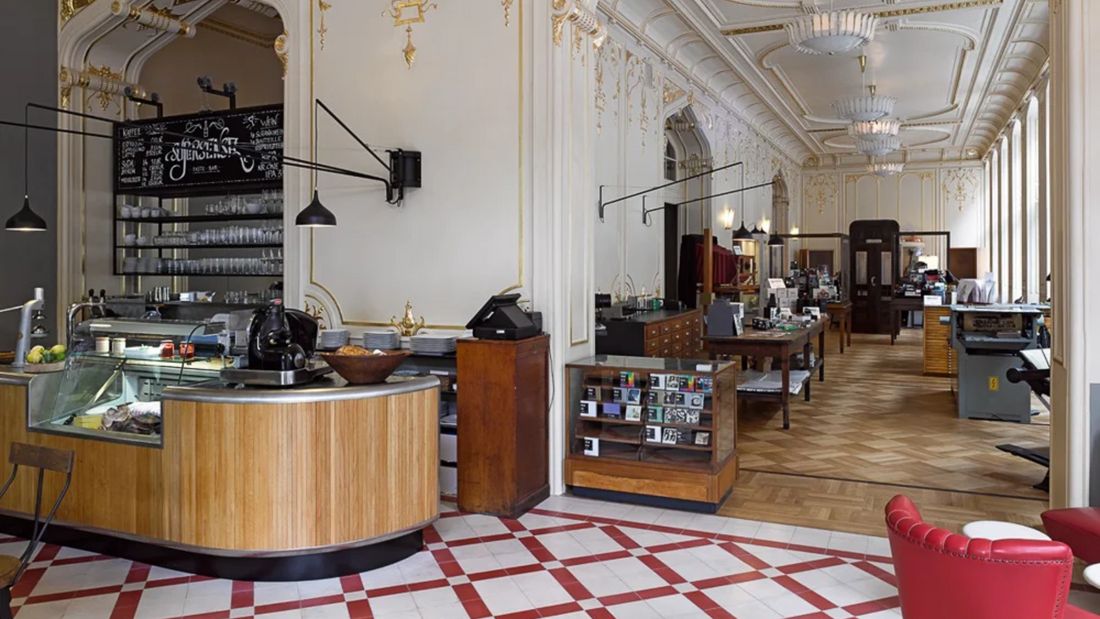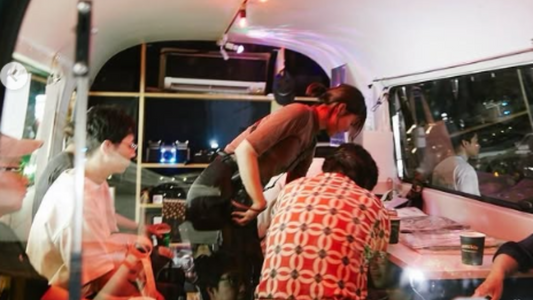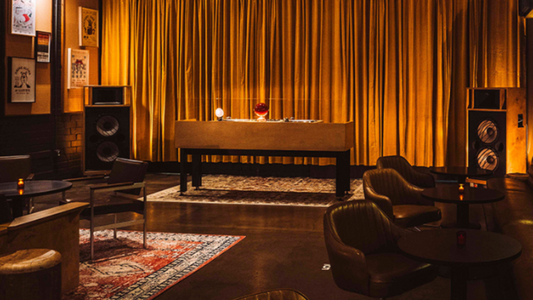
The Palazzo where sound has walls
By Rafi Mercer
New Listing
SUPERSENSE is one of Vienna’s most extraordinary listening spaces — explore more in our Vienna Music Venues guide.
Venue Name: SUPERSENSE
Address: Praterstraße 70, 1020 Vienna, Austria
Website: SUPERSENSE — Spaces
Instagram: @supersense
Phone: +43 1 890 05 44
It begins not with sound but with a building. You step through the arches of the Dogenhof on Vienna’s Praterstraße, a palazzo lifted from Venetian fantasy and laid carefully into Austria’s second district. Built in the 1890s as a hotel and meeting house, it is a place where architecture already feels like theatre, a stage designed for voices, conversations, music. The façade is all red-brick grandeur and ornate reliefs, yet once you cross the threshold the city’s rhythm softens, and a sense of deliberate stillness descends. It is here that SUPERSENSE has built its temple to the analogue arts — a print atelier, an instant-film laboratory, a coffeehouse that doubles as a salon, and, tucked within, one of Europe’s most quietly radical listening bars.
The word “bar” undersells it. SUPERSENSE is less about drink as lubrication and more about space as instrument. The rooms themselves have been tuned as if they were Stradivari — vaulted ceilings that allow tone to bloom, wooden panelling that absorbs chatter yet releases warmth, plush seating arranged not in rows or clusters but in a kind of democratic amphitheatre where every listener feels equidistant from the source. Here, sound does not come at you; it inhabits you.
Central to this philosophy is the system. SUPERSENSE partnered with Burmester, the Berlin-based company whose audio engineering borders on the ecclesiastical. The installation is not ostentatious, not a wall of flashing LEDs or industrial stacks. It is precise, minimalist, exacting — the kind of system where a single sustained piano note can hang in the air like smoke, traceable in shape, colour, and density. To sit in front of it is to understand why audiophiles talk of “truth.” When the stylus finds the groove, you are no longer at a venue, you are inside the recording itself.
This is not simply about fidelity. SUPERSENSE has always framed sound as material culture, a thing with weight, texture, permanence. Their “Mastercut” series — live, direct-to-disc recordings pressed in the building’s own vinyl atelier — are part of the story. Imagine sitting in a room as a quartet records straight onto lacquer, no digital safety net, no second takes, the sound carved literally into wax a floor above. Hours later you might hold that disc in your hands, still warm, still fragile, the very air you breathed embedded in its surface. To listen in the bar downstairs, on Burmester’s immaculate chain, is to close the circuit: music conceived, captured, and replayed under one roof, in full-circle intimacy.
Vienna, of course, has always been a listening city. Mozart and Mahler, Schoenberg and Strauss, its heritage is one of rooms designed for ears as much as for eyes. But what SUPERSENSE achieves is something subtly different. It is not the grandeur of the Musikverein or the severity of the Konzerthaus; it is domestic in scale, monastic in discipline. The lighting is low, the conversations are hushed, and yet the atmosphere is anything but austere. There is a warmth here, a sense of play, born perhaps of the fact that alongside its audiophile rig and lacquer-cutting lab, SUPERSENSE also produces Polaroid portraits, letterpress posters, and handmade books. Creativity radiates in analogue form, and the listening bar feels like the heartbeat that keeps it all alive.
Curation is as important as hardware. Nights here are not dictated by playlists or algorithms. Instead, there is an insistence on narrative — sets built from whole albums, evenings devoted to forgotten sessions, thematic journeys that might thread Ethiopian jazz into modern Viennese electronica, or juxtapose a 1960s Impulse! pressing with a contemporary Mastercut side-by-side. The curators treat records not as consumables but as chapters in a library, and the audience learns to follow. Listeners lean forward, trace sleeve notes with their fingers, nod almost imperceptibly as they hear a familiar line on unfamiliar equipment.
To speak of sound in this room is to speak of geometry. The horns are aligned not to blast but to breathe, the low end sculpted so it anchors without drowning, mids floating like lanterns in a night sky. You notice space between instruments, the negative volume where silence is allowed to frame tone. A brushed snare becomes not a tap but a granular surface; a trumpet note spreads outwards in concentric circles. You feel the air pressure shift when a bass clarinet enters. Even in the simplest passage — Bill Evans caressing a chord, for instance — the piano does not sit flat in front of you but arches, curves, extends into three dimensions.
SUPERSENSE understands that listening is an act of community. Seats are oriented not towards each other but towards the sound. Eye contact is secondary; shared immersion is primary. And yet, conversations after the needle lifts are richer, warmer, more nuanced because of it. You talk about what you heard, how it made you feel, how it compared to the pressing you own at home. The venue thus becomes more than a space — it becomes a common ground of listening, a place where strangers can find themselves in agreement without ever speaking.
For Vienna, this is significant. The city has long been bound by the rituals of its concert halls and opera houses. SUPERSENSE offers another liturgy: smaller in scale, modern in attitude, but just as reverent. It tells a younger generation that listening need not be passive, nor background. It can be ritual, even sacrament.
The drinks menu plays its role — wines, craft beers, carefully balanced cocktails — but it never leads. It is service, not spectacle. The design of the space encourages moderation: one sips, one listens. The bar is there to lubricate, not dominate. In that, SUPERSENSE remains faithful to the five rules of sonic excellence. Its system is chosen with love and tuned with precision. Its intent is singular: music is the centre, not wallpaper. The acoustic environment amplifies rather than distorts. The curation is rigorous and imaginative. And above all, the standard holds every night, not just on special occasions.
It is perhaps no surprise that international artists seek it out, nor that record labels quietly court its rooms for showcase evenings. What is remarkable is how unassuming it all feels. SUPERSENSE does not shout its presence. There are no neon signs, no velvet ropes. You stumble upon it, you enter, and suddenly you are part of something much larger: Vienna’s past meeting Vienna’s future in the language of sound.
To leave is to carry the resonance with you. The Praterstraße outside seems louder, harsher, less forgiving after an evening in the Dogenhof’s sanctuary. But the memory lingers — of a note hanging in space, of the silent nod of a fellow listener, of the peculiar alchemy by which walls become instruments. SUPERSENSE is not just a venue. It is a reminder that in the right space, music ceases to be performance or product. It becomes presence.
Explore More
Rafi Mercer writes about the spaces where music matters. For more stories from Tracks & Tales, subscribe or click here to read more.






